Italy has dozens of wonderful, small islands to discover and the Pontine Islands are definitely among the most beautiful and unmissable. Small in size, but with a great cultural and naturalistic heritage, these islands offer a variety of activities and iconic places to visit.
Their blue and pristine sea is known for the purity of its waters, while on the mainland there are several protected reserves. Here, in fact, the environment is respected and loved and can grow undisturbed. Indeed, with the exclusion of the two largest islands, Ponza and Ventotene, the Pontine Islands are largely uninhabited, although they can be visited with some care. This makes the small archipelago of the Tyrrhenian Sea one of the most popular destinations for summer holidays, but if you are in Rome and want to run away from the heat for a while, you can also organize a one day trip to Ponza, to get a first taste of the natural wonders of these unique islands.
What are the Pontine Island
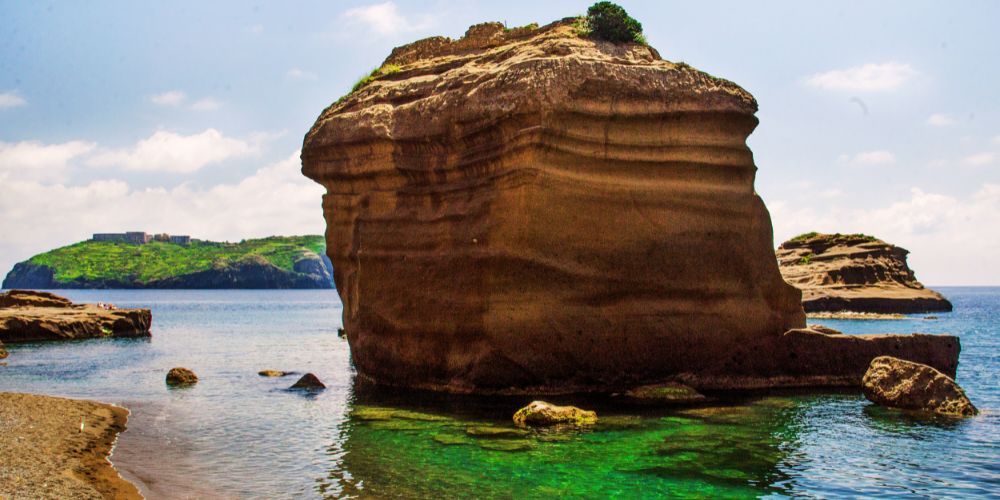
Do you already know all the Pontine Islands' names?
Ponza is the most fashionable, the most popular, and also the one that gives its name to the small archipelago; Ventotene is equally famous and rich in history as it was already known and frequented by the Roman emperors, but the other islands are certainly no different. Gavi, Zannone, Palmarola and Santo Stefano are basically uninhabitetd, but they share with their older sisters a pristine sea, wonderful beaches and lush nature. And a millenia long history as well.
Between wild beaches just as nice as the blue flags ones, and protected nature reserves, between enchanting villages and an always warm welcome, these islands are not less beautiful or interesting then the other that can be found along the italian coast, such as the Aeolian, the Tremiti, or the Maddalena archipelago. Pontine Islands all authentic, small corners of paradise, each one with its own charm. Let's go to discover them all.
What to do in Ponza, the queen of the Pontine Islands
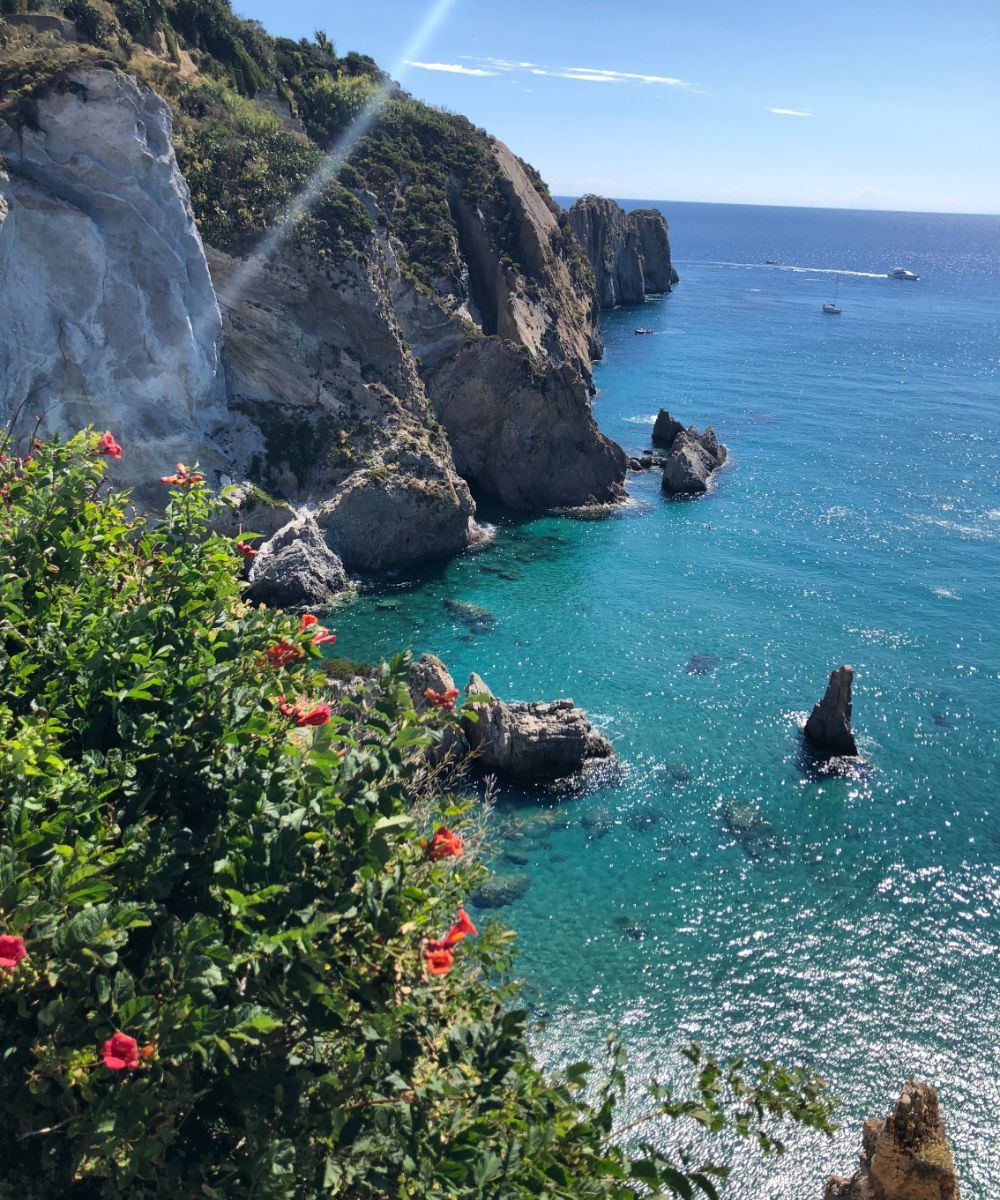
This small island, known since the time of the Phoenicians, is still much loved for its beaches and for all the possibilities it offers to sea and nature lovers.
Ponza enchants from the moment you arrive in Porto Borbonico, with its colorful houses reflected in the bay. Behind it, is the historic center with alleys, stairs and the main church, that of San Silverio and Santa Domitilla. The oldest and most evocative houses are dug right into the rock and some even date back to the prehistoric era. By night the center comes alive with bars and restaurants where you can taste the island's cuisine accompanied by excellent local wines.
Don't miss the Bourbon Belvedere, from which you can also see the other Pontine Islands and where there is a small Botanical Garden. Forte Papa and the Guardia Lighthouse are two other panoramic points to reach on foot via easy paths, accessible to everyone.
Frontone, Giancos and Cala Feola with its natural pools are the beaches that can be reached by land; there are also several small coves and many other beaches to reach by boat. Organizing boat excursions is a must, so as not to miss the most fascinating side of Ponza. You will get the chance to see blindingly white cliffs, caves, stacks or lesser-known beaches, and perhaps try to explore the seabed always full of life. If you are passionate about snorkeling, Cala Gaetano is definitely for you, thanks to its clear emerald waters.
Ventotene and Santo Stefano, between history and relaxation
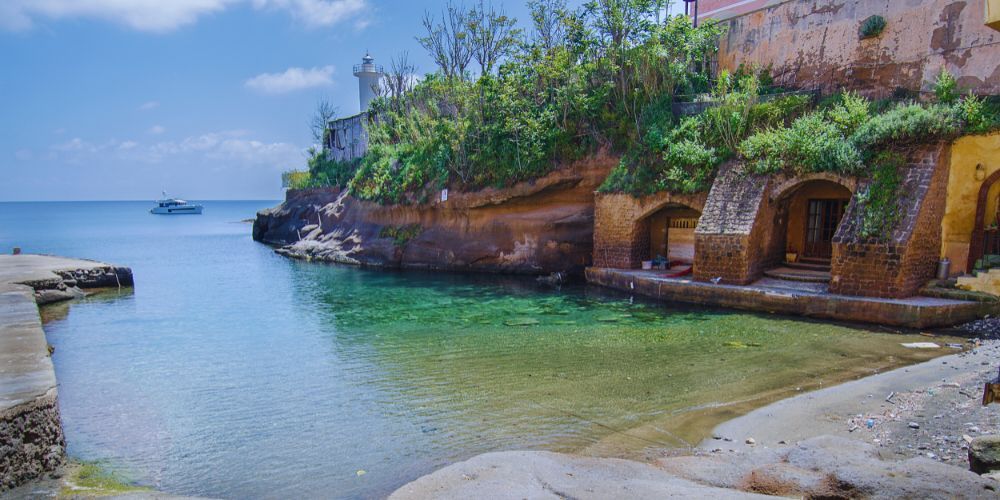
Ventotene is known for its slow and relaxed atmospheres as well as, of course, for its sea, but also for its illustrious history. There are many archaeological remains on the island, to which a museum is also dedicated. Furthermore, Ventotene is famous for its Manifesto which already in 1941, laid the foundations for the future united Europe.
In any case there is always so much to do and see in Ventotene starting from long walks in the hinterland, through a wild nature rich in every species of Mediterranean plants and flowers. The tourist port is the busiest area during the day and in the evening as well, but there is also another port, the one built by the ancient Romans who used the island as a place of exile for the nobles. In fact, there are still the remains of the ancient cisterns, the fish ponds and the luxurious Villa Giulia, where the daughter of Emperor Augustus lived, having arrived here in exile indeed. The ancient Roman port is now animated by small shops and restaurants, a perfect place for a walk after a day at the seaside.
Another iconic monument in the center is the church of Santa Candida. Every year, on September 20th, a celebration is dedicated to the saint. It's a big event, with fireworks and hot air balloons.
For such a small island, Ventotene surely has a large number of beautiful beaches, such as Cala Nave and Cala Rossano, or, to be reached by boat, Cala Battaglia, Punta Pascone, the Sconciglie and the famous Punta Eolo, an unmissable stop for those who practice diving.
The small Santo Stefano island is located a short distance away and is part of a nature reserve that also includes Ventotene itself. With a short boat trip you can visit the Bourbon prison which is still very well preserved.
Palmarola, the most 'tropical' of the Pontine Islands
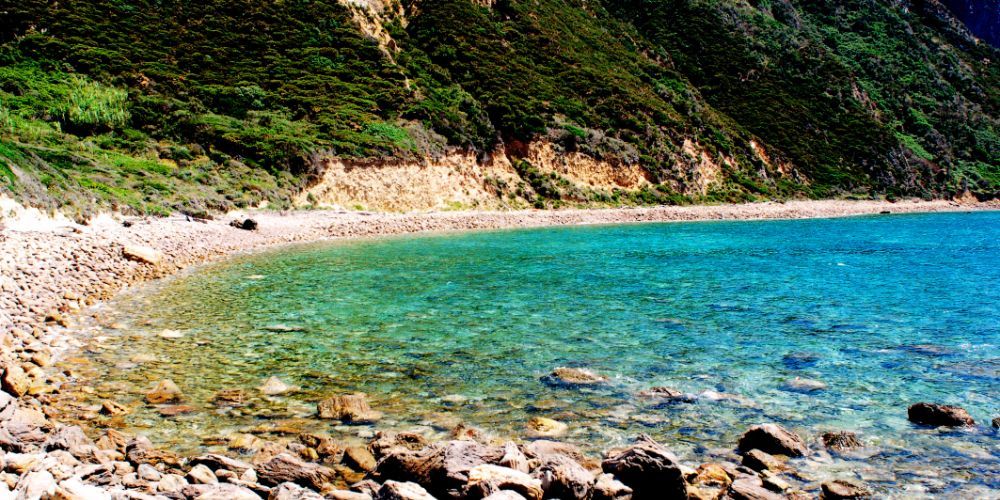
Thanks to the color of its sea, the biodiversity of its seabed and the large number of dwarf palms from which it takes its name, the island of Palmarola truly has something reminiscent of tropical paradises. Famous documentary makers and oceanographers such as Jacques Cousteau or Folco Quillici have defined it as the most beautiful island in the Mediterranean, or even "the most beautiful of the emerged lands" and without a doubt the third largest Pontine Island deserves each praise.
The fact that it can only be reached from Ponza and that it is inhabited, scarcely, only in summer, makes Palmarola even more fascinating and uncontaminated and this is probably why it is also among the favorite destinations of migratory birds. Despite this, there are numerous traces of the passage of man since the Neolithic. Over the centuries, the inhabitants of Circeo came here to extract the precious obsidian, the pirates to seek refuge among its cliffs and the inhabitants of Ponza to seek refuge from pirates, as evidenced by the houses dug into the caves. In some you can also stay overnight, for example in Cala del Porto, the only port on the island.
A visit to Palmarola cannot fail to include the Chapel of San Silverio, the patron saint of Ponza, which can be reached via a steep rock staircase. Also not to be missed are the cliffs called Galere, where the ocher of the stone is stained by the black of obsidian, or the spectacle of the Cathedral which is not an actual church but a system of tall, narrow caves to be visited by sea.
Palmarola also has its own small archipelago: four Faraglioni, big rocks among which the largest is connected to the mainland. They mey be less famous than the Capri's ones, but the largest of them contains a cave considered one of the most beautiful in the Tyrrhenian Sea.
Gavi and Zannone: what to do on the deserted Pontine Islands
The two small islands of Gavi and Zannone are uninhabited by humans, but they are surely extremely popular among thousands of bird species that come here to nest. The same goes for the waters, where fish, corals and marine plants can live undisturbed.
At Gavi, for example, under the watchful gaze of peregrine falcons and herring gulls, you can enjoy awesome dives along the caves and cliffs that make up the coast. There are no beaches here, but the marine fauna and flora are so rich in life and variety that they more than compensate for any other lack. Furthermore, Gavi is only one hundred and twenty meters from Ponza, so despite not having a port it is very easy to reach by boat.
Zannone, on the other hand, is part of the Circeo National Park. It is not possible to stay overnight but there is a small port where boats arriving from Ponza land for excursions. The only trekking path on the island starts from here; among centuries-old oaks and mouflons it leads to some spectacular panoramic points and the remains of a medieval monastery, abandoned due to constant pirate incursions. Also worth visiting is the Peschiera Romana, reachable via a staircase.
Along the coast there are many small coves, pebble beaches and cliffs. Don't miss the Grotta del Mariuolo, or Cala delle Grottelle and last but not least, the Calcara beach, perfect for a relaxing break.
The Pontine Islands' most beautiful beaches
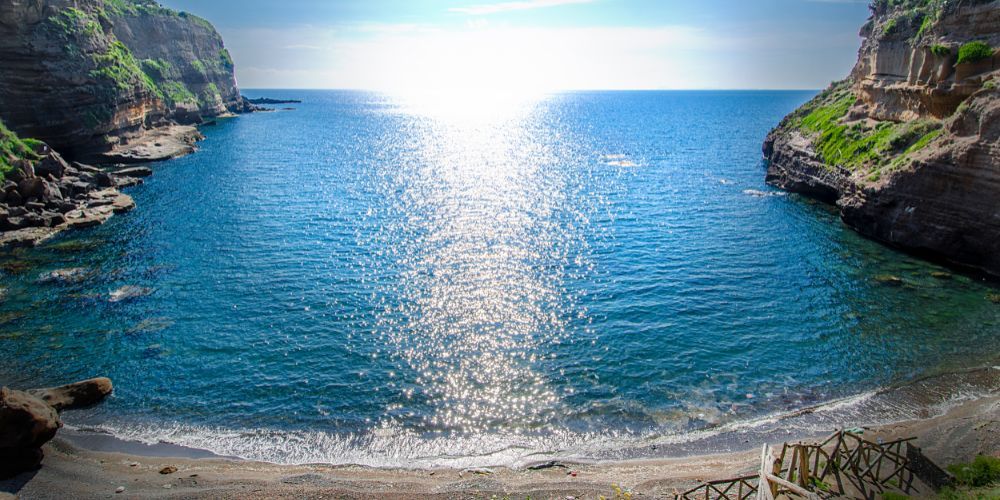
White cliffs overlooking the sea, small coves of sand and pebbles, wonderful seabeds to explore. Between the deep blue of the sea and the clear turquoise of the sky, the Pontine Islands offer a wide variety to visitors, to relax by the sea or even to enjoy a more adventurous holiday.
In Ponza there are some of the most beautiful beaches of the Pontine Islands. Chiaia di Luna, for example, dominated by an imposing wall of white tuff, is truly unmissable. You can get there by sea or through an ancient tunnel that's not always open. In Cala Feola you will find natural pools and crystal clear waters perfect for diving, as well as in Cala dell'Acqua, a snorkelling paradise.
In Ventotene there are Cala Nave and Cala Rossano. One known for its dark volcanic sand and deep water, the other for its golden sand and calm waters. Both are beloved by locals and tourists alike. Punta Eolo, instead, reachable by sea, will offer you the opportunity to admire the submerged wreck of a ship that sank one century ago.
In small Palmarola there are Cala Brigantina and Cala della Maga Circe. Basically the entire island is a natural reserve, its beaches with a quiet and slightly wild atmosphere are therefore characterized by spectacular wildlife.
Pontine Islands: how to get there
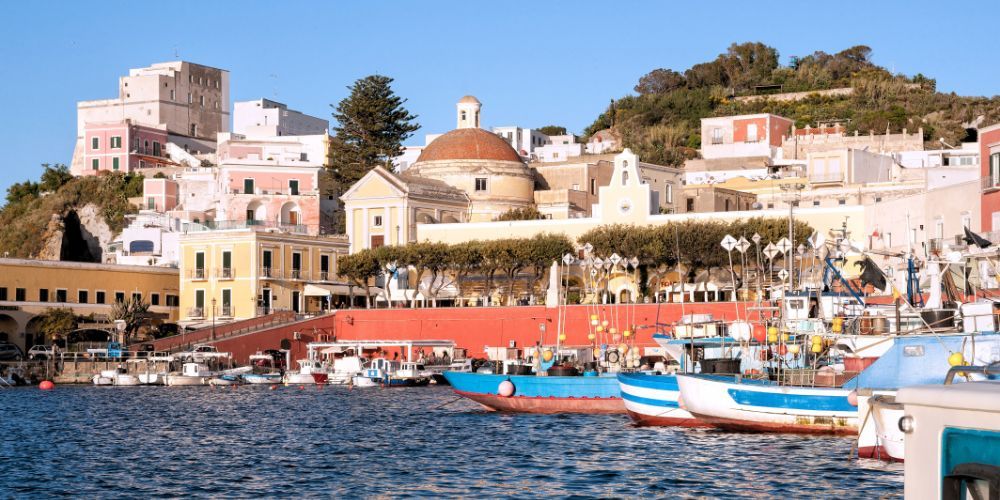
The Pontine Islands have the undoubted advantage of being well connected to the mainland, from Lazio but also from Campania. Ferries and hydrofoils leave daily mainly for Ponza, but also for Ventotene. Once you get there, you can organize excursions to the other islands that are not connected by regular ferries.
From Rome you can reach one of the three ports of Formia, Terracina or Anzio by bus or train. From here the sea crossing takes two and a half hours by ferry and an hour and a half by hydrofoil.
Formia can also be reached just as easily from Naples. Alternatively, in summer Ponza can be reached directly from the port of Naples, as well as from that of San Felice Circeo.
Last but not least, the beautiful island of Ischia, famous for its thermal springs, is an excellent starting base thanks to daily connections with Ponza.
About the author
Written on 27/06/2024


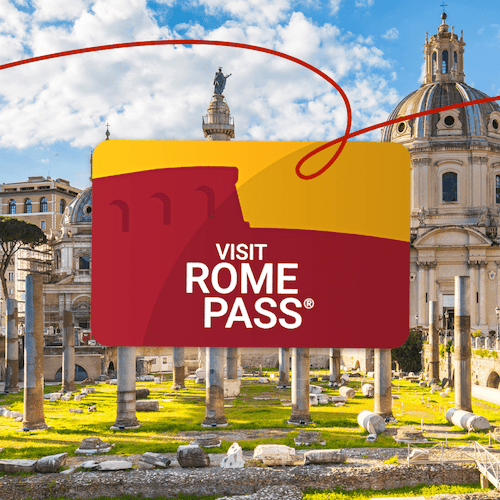
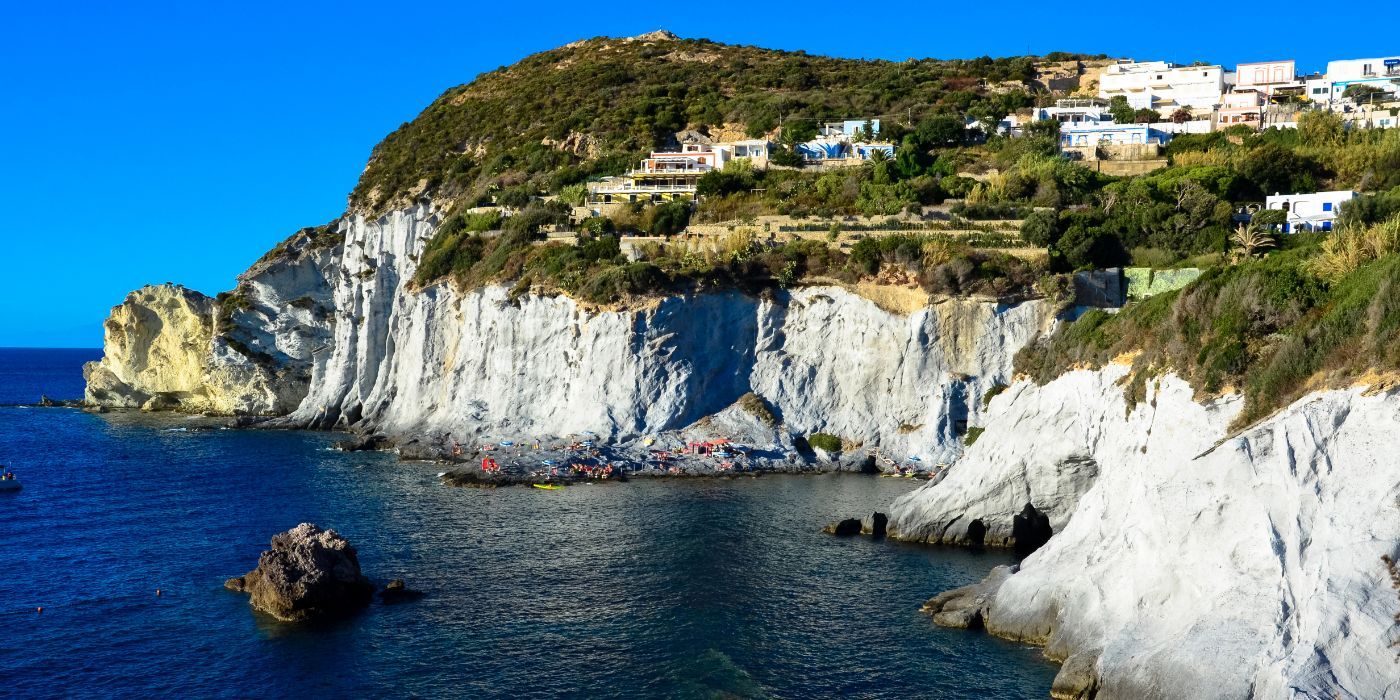
Paola Cirino
Pontine Islands: six pearls in the blue Tyrrhenian Sea. Discover the wonders of the beaches, seabed and villages just a few dozen kilometers from Rome